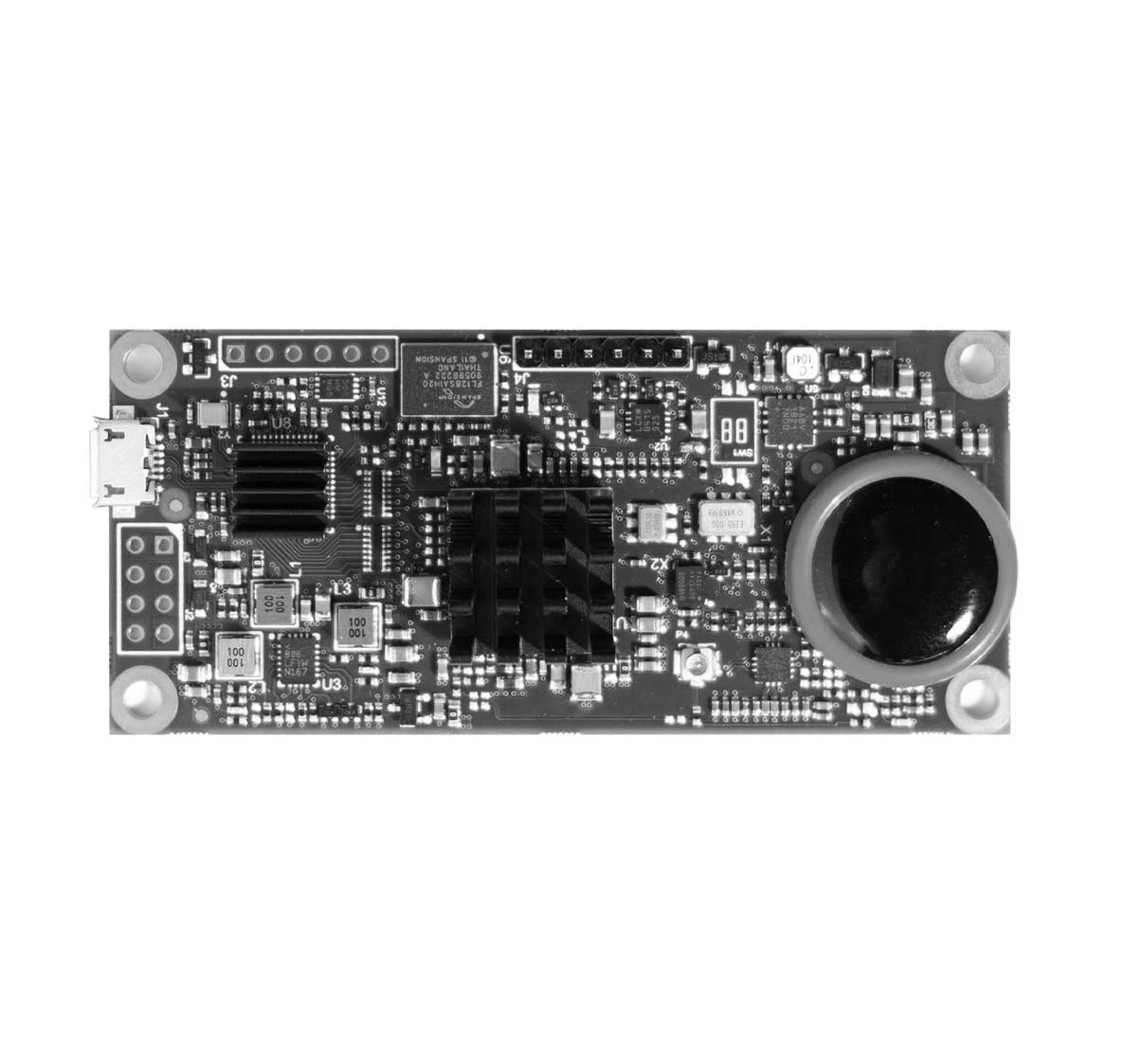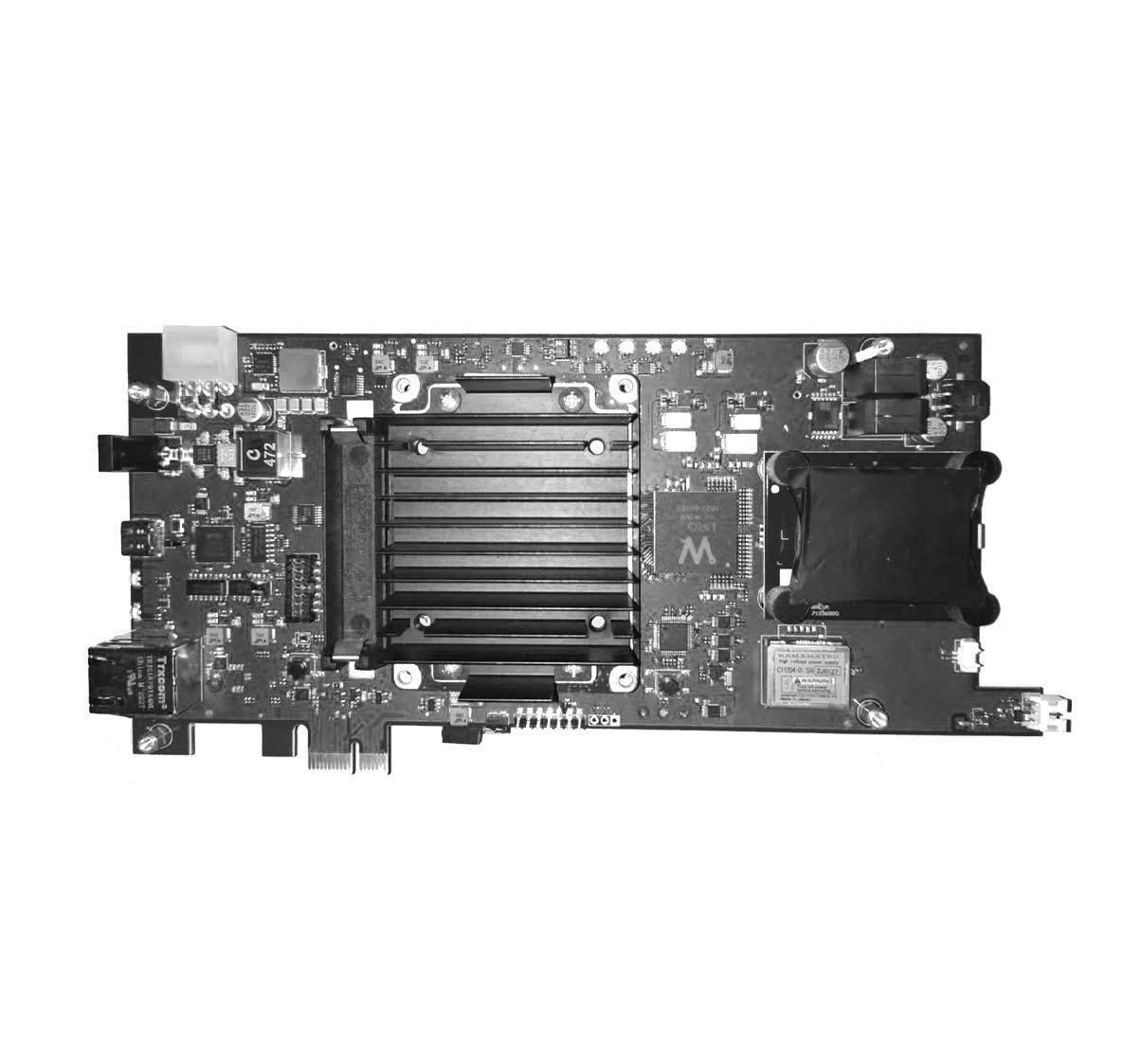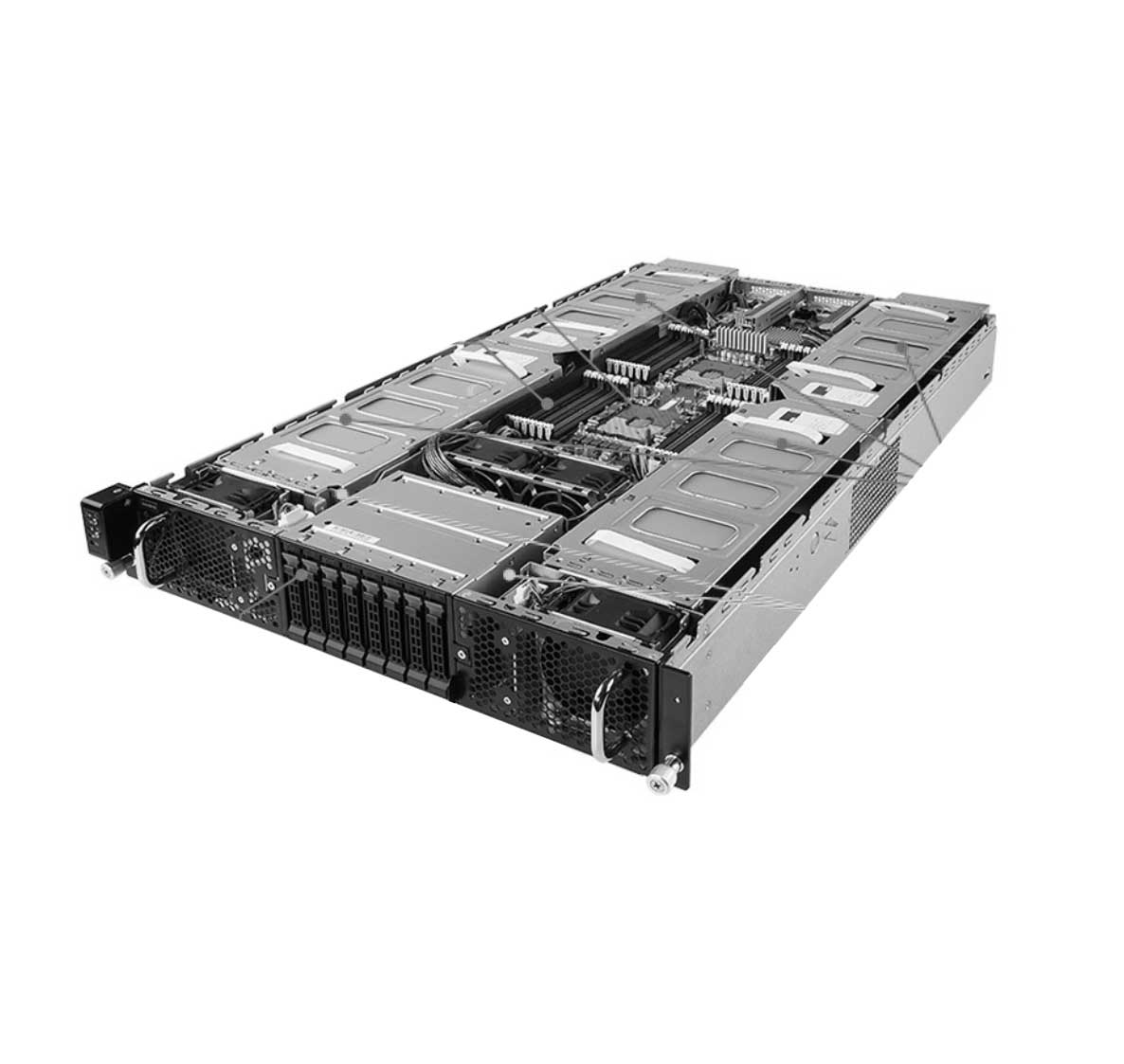
Single generator
Boards
At its core, the SGB features onboard, real-time sanity checks and a SHA-256 entropy conditioning function implemented within an FPGA. This FPGA also integrates a proprietary Time-to-Digital Converter (TDC) with 32 picosecond granularity and an embedded self-calibration procedure, ensuring stable and precise performance.
The device is fully compatible with Windows, Linux, and macOS, and ships with both a graphical user interface (GUI) for testing and a Python SDK for integration. Thanks to bundled plain-Python code, the SGB can inject entropy directly into the `/dev/random` pool on Linux systems and serve as a high-quality entropy source for applications using the popular NumPy library.
The quality of the raw random bitstreams generated by the SGB has been rigorously validated using the NIST test suite and the TESTU01 suite, confirming its suitability for high-assurance cryptographic and scientific applications.

Multi-generator
Boards
At its core, the 64xMGB features an array of 64 independent quantum entropy generators, each supported by a dedicated front-end integrated circuit. These are managed by a System-on-Module (SoM) combining a Xilinx UltraScale FPGA and a quad-core ARM processor—effectively making it a powerful computer-on-a-board with 4 GB of RAM and 16 GB of eMMC storage. It runs a secure Linux operating system, with critical operations protected within a Trusted Execution Environment (TEE).
The board produces up to 30 Mbps of raw quantum entropy. A firmware-based Deterministic Random Bit Generator (DRBG), implemented according to the NIST SP 800-90 A/B/C guidelines, provides FIPS 140-3 compliance. This DRBG has already passed the Cryptographic Algorithm Validation Program (CAVP), and Entropy Source Validation (ESV) is scheduled for 2025. The total conditioned output reaches up to 1 Gbit/s.
Designed for applications that demand scalable, high-quality randomness, the 64xMGB is an ideal platform for deploying encryption systems, privacy-preserving protocols, and advanced computing workloads that rely on quantum entropy. It supports full customization like any ARM-based single-board computer, while also offering a general-purpose, flexible architecture out of the box.

The RaP!
Chip
Requiring only a simple single-rail power supply, the chip provides two independent SPI interfaces (24 MHz) for maximum compatibility with a wide range of SoCs, CPUs, FPGAs, and MCUs. The first SPI channel is used for initial configuration and parameter optimization and can be permanently disabled after setup to eliminate the risk of tampering. The second SPI channel gives end-users access to entropy generation, chip re-calibration, and secure control features.
At its core, the chip integrates a NIST SP 800-90 A/B/C compliant Deterministic Random Bit Generator (DRBG), enabling FIPS 140-3 compliance with prediction resistance. The output bitstream can be optionally AES-256 encrypted and authenticated. The encryption key is internally derived using a Key Derivation Function (KDF), based on an in-silico root key combined with user-specific data such as a customer ID and chip ID. This symmetric key is securely stored in One-Time Programmable (OTP) memory and never leaves the device.
With a maximum output rate of 32 Mbps, the Random Power chip delivers high-speed, quantum-derived entropy. Thanks to its built-in cryptographic and self-protective features, it serves not only as a QRNG source but also as the foundational element for resilient Root-of-Trust architectures, making it ideal for industrial IoT, secure embedded systems, and post-quantum cryptographic modules.

RaP! Solutions for
Datacenters
These systems embed quantum entropy sources such as the 64x Multi Generator Board (64xMGB), enabling high-density QRNG deployment. Our configurations support high-performance dual-CPU servers with up to 8 PCIe boards—housing a total of 512 independent quantum entropy generators, capable of delivering up to 8 Gbit/s of conditioned entropy (DRBG output), all within just 2 standard rack units.
Server platforms are based on robust industry standards, including the Gigabyte G293 and SuperMicro Hyper A+ AS-2025. However, our QRNG boards are designed for flexible integration and can be embedded into alternative architectures depending on the specific application or customer requirement.
Multiple server configurations are available, optimized for compute-intensive workloads, high-throughput storage, or enhanced network performance—including support for optical NICs up to 40 Gbit/s. These QRNG-enhanced solutions are ideal for applications such as:
– Encrypted cloud storage
– Differential privacy-protected databases
– Privacy-preserving AI models and dataset handling
– Large-scale Monte Carlo simulations for scientific, industrial, and financial modeling
– With these systems, Random Power brings quantum-grade unpredictability into scalable, enterprise-ready infrastructure.


